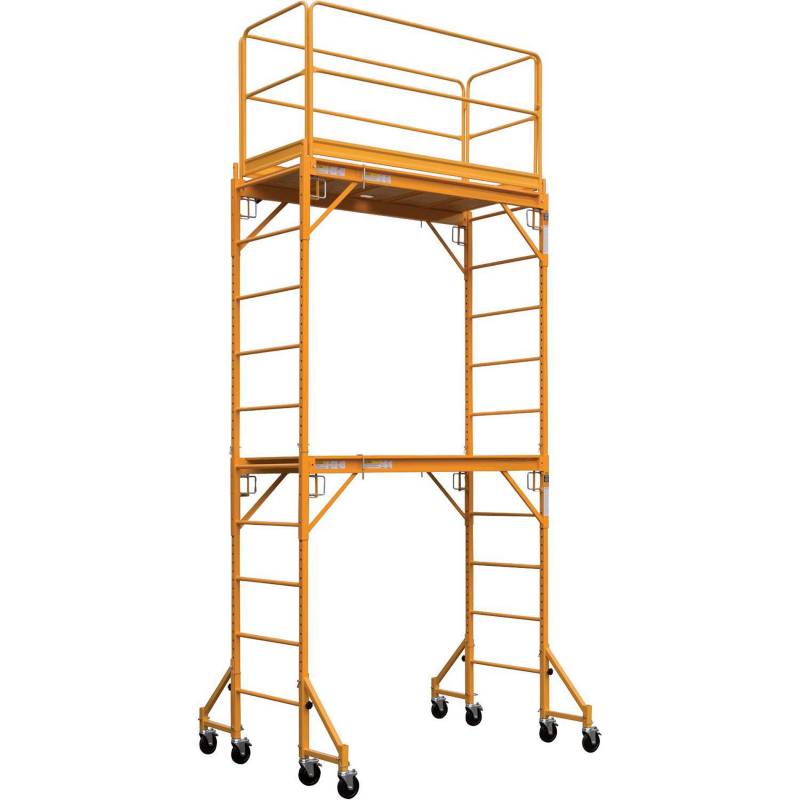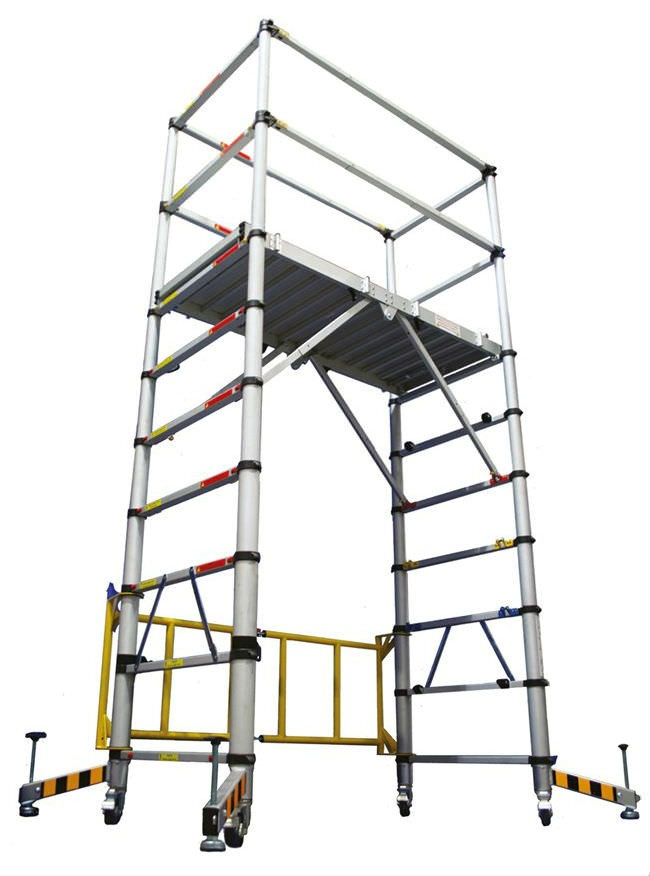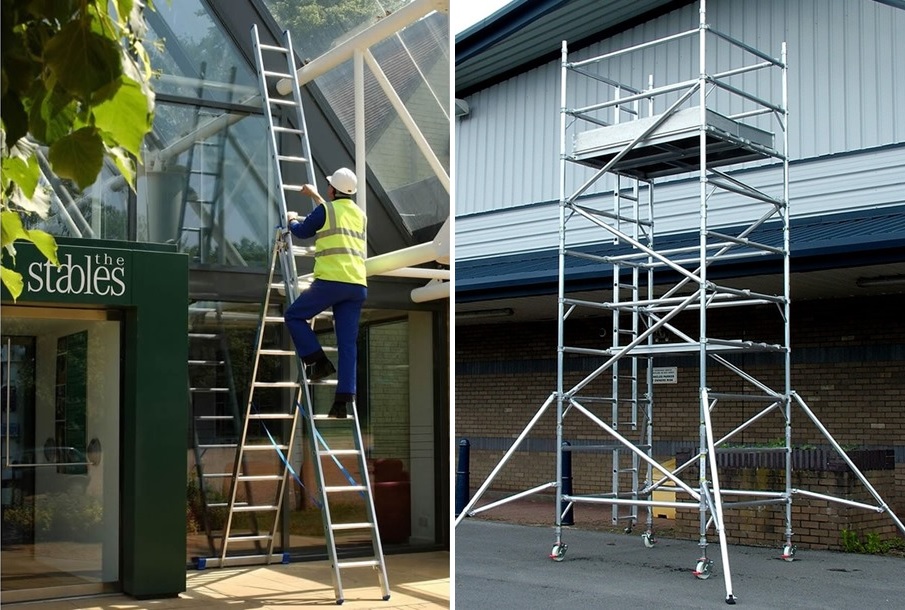Robust Scaffold Operatings Systems: The Structure of Building Safety
Eco-Friendly Scaffolding Solutions: Structure Sustainably =========================================================
Environment-friendly scaffolding options are essential for sustainable building and construction, decreasing ecological effect. By welcoming eco-friendly innovation and cutting-edge products, these options drive eco-conscious practices onward. The benefits include cost financial savings, reduced carbon footprints, and straightening with worldwide sustainability objectives. With advancements like bamboo and recycled steel, the construction industry progresses in the direction of a greener future. Implementing energy-efficient layouts and renewable energies further boost sustainability. Discover how eco scaffolding not just profits the setting but likewise enhances long-lasting cost effectiveness and industry practices.
Importance of Eco-Friendly Scaffolding
The relevance of environmentally friendly scaffolding in construction projects can not be overemphasized. Lasting scaffolding methods play a vital role in decreasing waste and minimizing the carbon footprint connected with building tasks. By opting for environment-friendly scaffolding remedies, construction companies can actively add to environmental preservation and sustainability efforts.
Conventional scaffolding techniques frequently cause significant material waste, causing environmental harm. Environmentally friendly scaffolding, on the other hand, concentrates on lowering waste via efficient planning, material choice, and application. This technique not just minimizes the unfavorable influence on the setting but likewise promotes an extra economical and sustainable building process.
Additionally, environment-friendly scaffolding assists in lowering the carbon footprint of building and construction tasks. By using sustainable products, executing energy-efficient methods, and reducing total waste generation, building and construction websites can considerably decrease their environmental impact. Accepting lasting scaffolding options is not only an accountable option yet also a strategic one for business aiming to line up with worldwide sustainability goals.
Advantages of Sustainable Scaffolding
Going with lasting scaffolding practices not just minimizes ecological damage yet additionally brings about a host of advantages for building and construction projects. One considerable benefit is price savings. By using sustainable scaffolding products and methods, building and construction companies can minimize costs related to traditional scaffolding systems. For example, products like bamboo and recycled steel are not just green however likewise affordable alternatives to conventional scaffolding products.
Additionally, lasting scaffolding adds to reducing the environmental influence of building tasks. Standard scaffolding often includes making use of non-biodegradable products and high energy intake throughout producing procedures. On the other hand, lasting scaffolding alternatives focus on environment-friendly products and energy-efficient manufacturing methods, decreasing the overall carbon footprint of construction activities.


Product Technologies in Scaffolding
Exploring lasting scaffold materials and eco-friendly building options can lead to considerable improvements in the scaffolding market.
Ingenious materials offer the prospective to minimize ecological effect while keeping architectural honesty and safety requirements.
Embracing these material advancements is vital for advertising sustainability in construction practices.
Sustainable Scaffold Materials
Cutting-edge innovations in scaffold products have transformed the building sector's technique to sustainability. https://highgatescaffolding.co.uk/index.html Bamboo scaffolding, known for its stamina and environmentally friendly buildings, has gotten appeal as a lasting option to typical products. Bamboo is a fast-growing plant that is conveniently offered and eco-friendly, making it an eco conscious selection for scaffolding needs.
In addition, using recycled steel structures in scaffolding supplies an option that reduces the environmental influence of construction projects. By repurposing steel right into scaffolding components, the building sector can decrease its carbon footprint and add to an extra sustainable future.
These lasting scaffold products not only offer structural stability but also line up with the growing need for environment-friendly building and construction techniques.
Eco-Friendly Building Options
Structure upon the foundation of sustainable scaffold materials, the expedition of green construction choices in scaffolding continues to drive technology in the direction of environmentally aware structure techniques. Environment-friendly structure efforts are progressively forming the construction sector, leading to the growth of scaffolding products that align with environmentally friendly techniques.
Makers are currently focusing on developing scaffolding solutions that are not only solid and resilient however also lasting and environmentally friendly. Bamboo, reused steel, and light weight aluminum are becoming prominent options in eco-friendly scaffolding construction, offering stamina and stability while decreasing the environmental influence.
Energy-Efficient Scaffold Layouts
Energy-efficient scaffold styles aim to reduce energy intake and minimize ecological effect throughout building jobs. By integrating renewable power sources and environment-friendly innovation, these designs add to sustainable structure techniques.
One example of energy-efficient scaffold style is the integration of photovoltaic panels into the scaffold framework. https://highgatescaffolding.co.uk These panels harness sunlight to create power, minimizing the reliance on traditional source of power. In addition, energy-efficient LED lighting systems can be mounted on scaffolds to lessen power intake throughout evening job, enhancing both security and sustainability.
Additionally, the use of lightweight and durable products in scaffold building and construction not only decreases energy requirements for transportation and setting up but additionally reduces ecological waste. Creating scaffolds with adjustable components that can be easily taken apart and recycled on multiple projects advertises a round economic situation method, decreasing the total carbon impact of building tasks.
Lasting Practices in Scaffolding
Sustainable practices in scaffolding include important aspects such as product recycling and energy-efficient styles.
By focusing on the recycling of products and selecting energy-efficient styles, scaffolding business can greatly decrease their environmental influence.
These techniques not only profit the setting however additionally add to the overall sustainability of building tasks.
Product Recycling
In the building and construction industry, the practice of material recycling plays a vital duty in promoting sustainability within scaffolding tasks. Reusing benefits both the environment and the economy by lowering waste sent out to land fills, preserving natural resources, and lowering greenhouse gas discharges connected with the production of new products.
Round economic situation methods are progressively being implemented, highlighting the relevance of maintaining materials in use for as long as possible with reusing and reusing procedures. Scaffolding companies are taking on these approaches by accumulating and arranging materials post-project, making certain that those materials are either reused or repurposed for future projects.
Energy-Efficient Styles
Executing cutting-edge style techniques in scaffolding building can cause significant decreases in energy intake and ecological impact. By including energy-efficient designs right into scaffolding frameworks, the building and construction industry can add to green structure techniques and lasting development.
Using renewable resource sources such as solar panels and wind generators can aid power lights systems and devices on scaffolds, minimizing dependence on nonrenewable sources. In addition, implementing passive layout strategies like natural air flow and daylighting can decrease the requirement for synthetic heating, air conditioning, and illumination, better improving energy efficiency.
These energy-efficient remedies not only reduced operational costs but additionally decrease the carbon impact of building and construction projects, lining up with the market's shift towards more lasting techniques.
Future Trends in Eco Scaffolding
With an expanding focus on ecological obligation in construction techniques, the evolution of eco scaffolding is shaping the future of the sector. Future fads in eco scaffolding are significantly concentrating on integrating green modern technology and making use of renewable energies to reduce the ecological influence of building projects.
Eco-friendly innovation plays a pivotal role in the growth of eco scaffolding, with innovations such as solar-powered scaffolding lights, energy-efficient scaffold heater, and green scaffold products ending up being much more widespread. These innovations not just lower the carbon impact of building sites but additionally contribute to cost savings over time.
Additionally, making use of renewable energies in eco scaffolding is obtaining grip. Bamboo scaffolding, as an example, is a sustainable option to conventional steel scaffolding, supplying stamina and durability while being eco-friendly. Furthermore, recycled products like reclaimed timber and steel are being repurposed for scaffolding building, advertising a round economic climate within the sector.
As ecological consciousness continues to expand, the combination of environment-friendly technology and renewable resources in eco scaffolding will certainly be crucial chauffeurs of sustainable building and construction practices in the future.
Often Asked Questions
Are There Any Type Of Particular Accreditations or Requirements That Eco-Friendly Scaffolding Solutions Must Satisfy?
Accreditation demands and ecological requirements play a necessary role in ensuring that eco-friendly scaffolding remedies meet defined standards for sustainability and environmental impact. Conformity with identified certifications and requirements is vital for advertising environment-friendly techniques in building.
How Does the Price of Eco-Friendly Scaffolding Contrast to Conventional Scaffolding Options?
When contrasting the expense of environment-friendly scaffolding to standard choices, aspects such as material top quality, longevity, and installation expenses require factor to consider. While first expenses might vary, the long-lasting advantages in ecological influence and sustainability can outweigh ahead of time expenditures.

Can Eco-Friendly Scaffolding Solutions Be Custom-made to Fit Different Construction Jobs and Requirements?
Custom-made applications for eco-friendly scaffolding cater to varied building projects and industry needs. Functional remedies can be tailored to certain requirements, making certain compatibility with various structures and enhancing sustainability techniques in the structure sector.
What Are Some Possible Difficulties or Limitations Related To Executing Lasting Scaffolding Practices?
Implementing lasting scaffolding techniques can deal with difficulties due to strict governing compliance, limited product sturdiness, and greater costs. Stabilizing environmental impact with safety and security standards continues to be crucial. Development is important to get over these challenges.
Just How Can Firms and Construction Companies Promote and Inform Their Labor Force on the Advantages of Eco-Friendly Scaffolding Solutions?
To promote environmentally friendly scaffolding services, firms can engage their workforce via sustainability training programs. By highlighting the benefits of these techniques, firms can enlighten employees on the importance of integrating sustainable services in building jobs for a greener future.
Final thought
In recap, environmentally friendly scaffolding options are necessary for sustainable construction practices. The advantages of making use of sustainable products and energy-efficient layouts in scaffolding are evident in reducing environmental influence and promoting green building initiatives.
By embracing sustainable techniques in scaffolding, the construction industry can contribute to a more environmentally friendly future. As product advancements remain to advance and future fads in eco scaffolding emerge, the relevance of building sustainably will just grow.